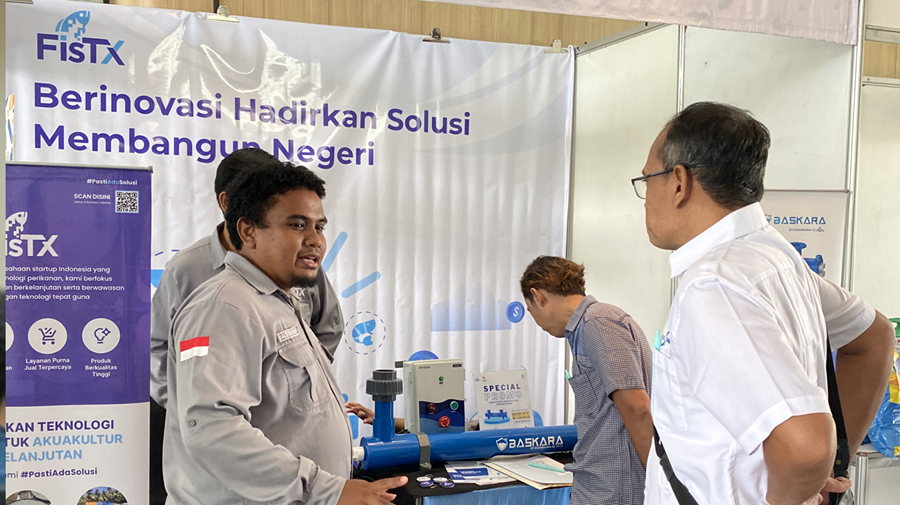
Ensuring Quality Post-Larvae Through Genetics
The importance of selecting high-quality post-larvae (shrimp seeds) significantly affects the quality of shrimp in subsequent stages. Post-larvae are derived from selected vannamei shrimp broodstock and inherit their superior traits. The primary criteria for producing high-quality post-larvae are broodstock that are specific pathogen-free (SPF), at least 8-10 months old with F1 or first-generation offspring, weigh between 35-65 grams and measure 17-20 cm in length, have a full and unpale hepatopancreas, and swim against the current.
Broodstock are usually induced to spawn using ablation, by cutting one of the eyestalks of female broodstock to accelerate gonad maturation with the result of orange-yellow back (female) and attachment of white spermatophore at the base of the fifth walking leg (male). In addition to broodstock, post-larvae quality is also determined by the eggs they produce. Healthy vannamei shrimp broodstock produce uniform eggs with around 369,900 eggs per broodstock. Egg size is influenced by the amount of yolk and develops into nauplii. The zoea and mysis stages are observed based on post-larvae length development. After that, the selected larvae that survive are typically after the zoea stage, as significant mortality occurs from zoea III to mysis I.
Tips for Selecting Healthy Post-Larvae
Characteristics of healthy post-larvae include being active, swimming against the current, and responsive to external stimuli. Healthy post-larvae have bright/white/light brown color, full intestines, swim straight, slightly bent body shape, shiny eyes, and no spots on the skin. Their bodies are clean from dirt and moss. Healthy post-larvae also have uniform sizes and the ideal age is between PL10-PL12 (at this stage, their tails have developed well upon stocking and can move to the pond bottom) (Kusyairi et al., 2019). Healthy post-larvae undergo testing for several virus types, namely WSSV, TSV, YHV, BP, IHHNV, HPV, and MBV, indicating that the broodstock are SPF. This proves that F-0 broodstock are virus-free until they produce first-generation (F-1) seeds.
Author: Reza Istiqomatul Hidayah (Technical Aquaculture of FisTx)
References
Fatimah., Wardha, J., and Supasman, E. 2022. Reproduction Study of Vannamei Shrimp Broodstock (Litopenaeus vannamei) in the Third Breeding Unit Pond of PT. Esaputlii Prakarsa Utama. Aquamarine, 11(2): 13-23.
Haryanti., Fahrudin., Ida, K.W., Sari, B. M., Gusti, N. P., and Ketut, M. 2011. Genotype Profile of Giant Tiger Shrimp Seeds (Penaeus monodon) Resulting from Selection with Tolerance Characteristics against White Spot Syndrome Virus Infection. Journal of Aquaculture Research, 6(3): 393-405.
Iskandar, A., Afrizal, R., Andri, H., Giri, M. D., Abuzzar., Khoerullah., and Muksin. 2021. Vannamei Shrimp Hatchery Management at PT. Central Proteina Prima, Kalianda, South Lampung. Journal of Applied Fisheries, 2(1): 1-8.
Kusyairi, A., Didik, T., and Sri, O. M. 2019. Vannamei Shrimp Cultivation in Backyard Land of Pakis Village, Sawahan District, Surabaya City. Journal of Community Services, 4(2): 103-110.
Racotta, I. S., Elena, P., Ana, M. I. 2003. Shrimp larval quality in relation to broodstock condition. Aquaculture, 227: 107-130.
Subaidah S, Pramudjo, Asdari M, Imam N, Sugestya, Nurul D, Cahyaningsih S. 2006. Vannamei Shrimp Hatchery. Situbondo (ID): Situbondo Brackish Water Aquaculture Center.


